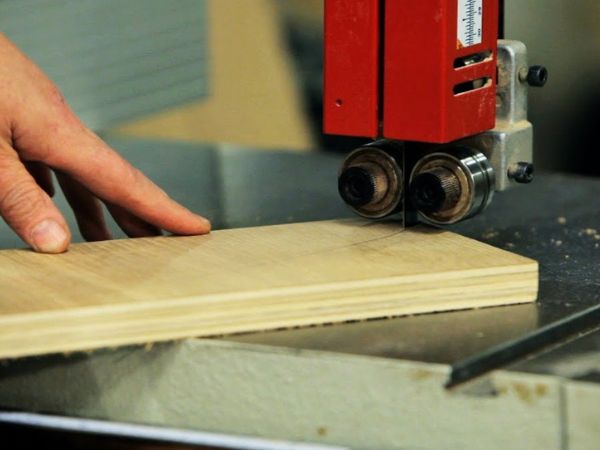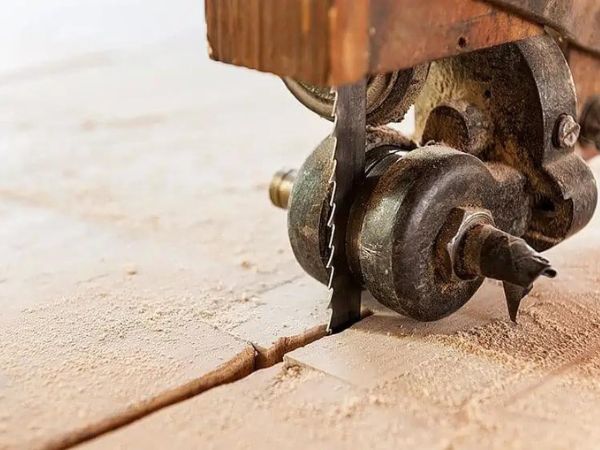What You Need To Know About Band Saws? You Need To Know!

Auto Amazon Links: No products found.
If you’re a woodworking enthusiast, metalworker, or DIY enthusiast, you’ve likely heard of band saws. These versatile tools are a staple in workshops and garages around the world, but do you really know what you need to know about band saws? In this comprehensive guide, we will dive deep into the world of band saws, covering everything from their history and types to their uses, maintenance, and safety precautions.
Contents
Understanding the Basics
1. A Brief History of Band Saws
The concept of the band saw dates back to the early 19th century when it was first patented by a Frenchman named Auguste Perret. However, it was not until the mid-20th century that band saws gained popularity and became an essential tool in various industries. Today, they come in various sizes and configurations, making them suitable for a wide range of cutting tasks.
2. How Band Saws Work
At its core, a band saw consists of a continuously looped blade with teeth that rotate around two or more wheels. These wheels are powered by a motor, allowing the blade to move in a continuous loop. The workpiece is guided into the blade’s path, allowing for precise and controlled cuts. The thin, flexible blade allows for intricate curved cuts and straight-line ripping, making it a versatile cutting tool.
Types of Band Saws
There are several types of band saws available, each designed for specific tasks. Understanding the different types will help you choose the right one for your needs.
1. Woodworking Band Saws
Woodworking band saws are the most common type and are specifically designed for cutting wood. They come in various sizes, from small benchtop models to large floor-standing units. Woodworking band saws are ideal for making curved cuts, resawing, and cutting intricate designs.

2. Metal-Cutting Band Saws
As the name suggests, metal-cutting band saws are designed for cutting metal, such as steel, aluminum, and brass. They use specialized blades with teeth designed to handle the hardness of metal. These band saws are commonly used in metal fabrication shops and are essential for creating precise metal cuts.
3. Vertical vs. Horizontal Band Saws
Band saws can be further categorized into vertical and horizontal models. Vertical band saws have a blade that moves vertically, making them excellent for intricate cuts and curves. Horizontal band saws, on the other hand, have a blade that moves horizontally, making them ideal for straight cuts and large workpieces.
Choosing the Right Band Saw
When selecting a band saw for your workshop, consider the following factors:
1. Size and Capacity
The size of the band saw you choose should align with the type of work you plan to do. Smaller benchtop models are suitable for light-duty tasks and hobbyists, while larger floor-standing units are better for heavy-duty work.
2. Blade Type and Size
The type and size of the blade are crucial for achieving precise cuts. Different materials and cutting tasks require specific blade types. Ensure you have the appropriate blades for your intended applications.
3. Motor Power
The motor power determines the cutting capacity of the band saw. For cutting thicker and denser materials, you’ll need a band saw with a more powerful motor.

4. Table Size and Tilt
A larger table provides more support for your workpieces. Some band saws also have tilting tables, allowing you to easily make bevel cuts.
5. Guides and Accessories
Consider the availability of guides, fences, and other accessories that can enhance the accuracy and versatility of your band saw.
Using Your Band Saw Safely
Safety should be your top priority when working with a band saw. Here are some essential safety tips to keep in mind:
1. Read the Manual
Before using your band saw, thoroughly read the manufacturer’s manual to understand its specific safety instructions and operational guidelines.
2. Wear Safety Gear
Always wear safety goggles or a face shield to protect your eyes from flying debris. Additionally, use hearing protection, as band saws can be noisy.
3. Keep Hands Away
Never place your hands near the blade while it’s in motion. Use push sticks or other appropriate tools to guide the workpiece.
4. Maintain Proper Blade Tension

Ensure that the blade is correctly tensioned to prevent it from slipping or breaking during operation.
5. Keep the Workspace Clean
A clutter-free workspace reduces the risk of accidents. Remove any scraps or debris from the saw table and floor.
Maintenance and Blade Care
To keep your band saw in optimal working condition, regular maintenance is essential:
1. Blade Maintenance
Inspect the blade regularly for signs of wear or damage, and replace it as needed. Keep the blade clean and free of pitch buildup.
2. Lubrication
Apply lubrication to the blade guides and other moving parts as recommended by the manufacturer.
3. Alignment
Check and adjust the blade alignment and tension to ensure straight and accurate cuts.
4. Clean the Wheels
Clean the saw wheels and tires to prevent slippage and maintain proper tracking.
5. Replace Worn Parts
If any parts of the band saw become worn or damaged, replace them promptly to ensure safe and efficient operation.
Common Band Saw Applications
Band saws are incredibly versatile tools that can be used for a wide range of applications:

1. Curved Cuts
The ability to make precise curved cuts makes band saws indispensable for creating intricate designs in wood and metal.
2. Resawing
Resawing involves cutting a thick board into thinner pieces. Band saws excel at this task, allowing you to maximize the use of expensive wood.
3. Rip Cuts
Band saws can also make straight rip cuts in wood and metal with precision and ease.
4. Notching and Dadoes
Band saws are used to create notches and dadoes in woodworking, which are essential for joinery and cabinetry.
5. Metal Fabrication
In metalworking, band saws are employed to cut metal pipes, bars, and sheets with precision.
Conclusion (What You Need To Know About Band Saws?)
In conclusion, band saws are versatile tools that find applications in woodworking, metalworking, and various DIY projects. Understanding the different types, choosing the right one for your needs, and using it safely are crucial aspects of harnessing the full potential of this tool. Regular maintenance and blade care will ensure that your band saw remains a reliable companion in your workshop for years to come. Whether you’re a seasoned professional or just starting, a band saw is an excellent addition to any workshop, providing you with the power and precision to bring your projects to life.

Frequently Asked Questions (FAQs)
Q1: Can I use a woodworking band saw for cutting metal?
A1: While it’s possible to use a woodworking band saw for cutting thin and soft metals, it’s not recommended for heavy-duty metal cutting. Metal-cutting band saws are specially designed with the necessary blade types and motor power to handle metal materials effectively. Attempting to cut thick or hard metals with a woodworking band saw may damage the machine and pose safety risks.
Q2: What is the difference between a 14-inch and a 20-inch band saw?
A2: The primary difference between these two band saw sizes is their cutting capacity. A 20-inch band saw can accommodate larger and thicker workpieces compared to a 14-inch band saw. If you frequently work with sizable materials or require more cutting depth, a 20-inch band saw would be a better choice. However, for most general woodworking tasks, a 14-inch band saw is sufficient and more affordable.
Q3: Can I resaw with a smaller benchtop band saw?
A3: Yes, you can perform resawing on a smaller benchtop band saw, but there are limitations. Benchtop models typically have a narrower cutting capacity, so you’ll be limited to resawing smaller pieces of wood. If you plan to resaw larger boards, a larger floor-standing band saw with a greater throat capacity would be more suitable.
Q4: Can I use a band saw for cutting curves and intricate designs in wood?
A4: Yes, band saws are excellent for cutting curves and intricate designs in wood. Their thin, flexible blades allow for precise and detailed work. You can even install narrower blades with fine teeth to achieve tighter curves and intricate patterns. Just be sure to practice and take your time to master the technique, as it requires some skill and control.
Auto Amazon Links: No products found.
Auto Amazon Links: No products found.





